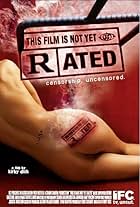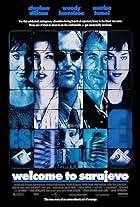The true story of Doug Bruce who woke up on Coney Island with total amnesia. This documentary follows him as he rediscovers himself and the world around him.The true story of Doug Bruce who woke up on Coney Island with total amnesia. This documentary follows him as he rediscovers himself and the world around him.The true story of Doug Bruce who woke up on Coney Island with total amnesia. This documentary follows him as he rediscovers himself and the world around him.
- Director
- Stars
- Awards
- 1 win & 5 nominations
Storyline
Did you know
- TriviaShortlisted for Best Documentary Feature at the 2005 Academy Awards.
- Quotes
[first lines]
Narrator: How much of our past lives, the thousands of moments we experience, helps to make us who we are? If you took all of these remembrances, these memories, away, what would be left? How much is our personality, our identity, determined by the experiences we have, and how much is already there - pure "us"?
- SoundtracksSymphony No.8
Written by Antonín Dvorák
Dr. Daniel L. Schacter, a Harvard Memory Psychologist, appears early in the film as a useful talking head, offering us a concise review of the various classes of memory: episodic (personal identity and life events), semantic (general fund of information about the world), and procedural (language skills, how to ride a bike) memory. It is only episodic memory that is compromised in psychogenic amnesia. Bruce's retained language skills and other procedural abilities, and his intact fund of general knowledge, demonstrated that Bruce was suffering from a psychogenic amnesia, not an organic amnesia, i.e., one based on obvious brain damage.
In organic cases, e.g., in Korsakoff's or Alzheimer's diseases, or after severe head trauma, amnesia also is not limited to the past (retrograde amnesia) but also affects the capacity to form new memories and retain newly learned material (anterograde amnesia). An MRI study did show that Bruce had an enlargement, perhaps a tumor, in the area of the pituitary gland, but this could not explain his fugue or memory loss.
Bruce had a broad enough social network stretching from New York City to London to Spain, where his family live - that it did not take long before he was identified and then looked after by people who know him. The film traces his initial medical evaluations, his reunion with friends and family, and his efforts to reconstruct his life. He does gradually fill in some missing pieces, though even 15 months later he has only patchy recall of his past.
We never do learn of any obvious trigger for his fugue state. Apparently he had never before suffered from such an event. Reference is made to the fact that his mother had died, but that was several years earlier. No other major stressors were disclosed. There was no evidence of trauma or foul play surrounding the onset of the fugue. No so-called "secondary gain" factors emerged, i.e., there was no apparent reward to be gained, or scrape to be avoided, by a convenient (malingered) amnesia episode.
Though in various newspaper accounts since the film's release, we learn that Bruce has indulged in a great deal of self promotion around the matter of his amnesia, never tiring of being the center of attention at Manhattan parties, even starting up a website about his situation. Maybe his initial amnesia was real enough, but these subsequent developments do suggest that sustaining his condition has had its rewards.
This was a very frustrating film for me. I kept waiting for psychiatric treatment to commence, since Doug's amnesia was indisputably psychogenic in origin, or at least for more information on a plausible set of stressors to explain the timing and extent of his problem. Initial evaluation by a psychiatrist is mentioned early on, but treatment apparently never came; it certainly wasn't mentioned. So Bruce's case was very much like a 19th Century case, where everyone agrees on the diagnosis and then just sits around waiting. Cost was certainly no object: Bruce and his family were well off people.
The only interesting aspect of the situation was that everybody agreed on Bruce's largely favorable personality changes after the fugue. He showed a fresh sort of innocence, thoughtfulness, emotional openness and sensitivity, where before the event his friends saw him as brash, cynical, and a more flip wit. But these personality changes weren't dwelt upon as much as I would have wanted. At film's end, we see Bruce building a new, more relaxed life, with a new lover and a new career in the arts.
This film held my attention keenly because of my clinical interest, as I waited in suspense for the other shoe to drop: i.e., for resolution of the problem, or at least elucidation of the causes, as a consequence of psychotherapy, hypnotherapy, or the use of amnesia-busting drugs, e.g., sodium amytal or pentobarbital interviews. Why weren't any of these things tried? Did Bruce duck treatment because he knew he didn't need any? Take away clinical pique, and actually found this film is pretty boring: neither the protagonist nor his friends or family are especially interesting people. Bruce's reunion with drinking buddies in London showed them to be especially dull. My Grade: B- 6/10
- roland-104
- May 29, 2006
- Permalink
Details
- Release date
- Countries of origin
- Language
- Also known as
- Неопознанный белый мужчина
- Production companies
- See more company credits at IMDbPro
Box office
- Gross US & Canada
- $126,836
- Opening weekend US & Canada
- $24,591
- Feb 26, 2006
- Gross worldwide
- $131,256
- Runtime1 hour 28 minutes
- Color
- Sound mix
- Aspect ratio
- 1.85 : 1
Contribute to this page











